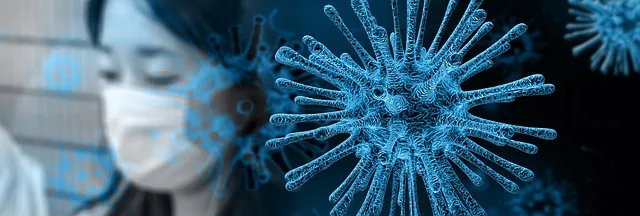In Part 1, I discussed the failed models behind flattening the curve. Then, in Part 2, I took a brief look at the pre-existing economic situation and the added shock of shutdown. Now, let's examine how our understanding of COVID-19/SARS-CoV2 keeps changing.

Image credit
There was no curve as initially predicted. The economy is in shambles.
I can hear it already. "But we're worried about people, not the economy, you heartless capitalist pig!"
The economy is people, and its purpose is a blend of cooperation and competition to serve our wants and needs through production and exchange. People are suffering economically and psychologically based on dubious data and worse analysis. That is the entire point behind the protests against political mandates. Now enough with such nonsense.
Despite the complete failure of the predictive models, and the absence of catastrophic infection rates, we are still being told that normal life can't be allowed to resume until various arbitrary benchmarks are met.
- There can be no new cases in X days
- Not until a vaccine is developed and made mandatory
- Only if everyone wears a mask
- We need universal testing and contact tracing
- Just wait for the experts to say it's safe!
And so on. It's not based on any kind of scientific analysis of what actually happened. Heck, we hardly know what's been going on despite three months of 24-hour news coverage.
We still don't know exactly how virulent this virus really is, since results are so inconsistent across the US and the globe.
The CDC apparently finally calculated that surface contamination is not a very probable vector for COVID-19 transmission. In other words, had we stayed open and put a bit more effort into cleaning surfaces, it would have been no big deal on that front.
We don't even know whether a vaccine can be developed, much less how effective it will be against viral mutation over time. The common cold is notoriously impossible to vaccinate. The success rate for flu vaccination is dubious. The challenge to create a safe, effective vaccine for a novel coronavirus is huge, and perhaps insurmountable.
The efficacy of masks is widely debated. What percentage do they stop if you're healthy and exposed to someone who is infected? What percentage do they stop if you might be unknowingly infected and wear a mask to protect others? How many people wear masks properly? What new dangers dangers do masks introduce to wearers who have breathing issues, or who may fog their glasses with their own breath? Are home-made masks effective at all? Is this just security theater instead of real security?
The claim remains that many, if not most, potentially infected are asymptomatic carriers. In other words, we have no idea how many are infected, or who may have had such a mild case that they fought it off without knowing they had the dire disease of doom. Would testing really help matters, or would it become a new control mechanism? Can we trust the government to protect patient privacy and not use their new database for nefarious purposes? Have you already forgotten the Edward Snowden revelations?
The experts we are told to revere were demonstrably wrong about every prediction they made thus far, so why should we trust their opinions? Experts who dissented have been dismissed as kooks regardless of their analysis and predictive accuracy. Remember, that curve was flattened, but the premise behind everything that happened at the start has been forgotten already.
But we all need to do something, or we still just want granny to die, right? Nothing less than unthinking obedience is good enough. But meanwhile, government gets to claim new precedents for new authority, and corporate cronies get mucho moolah with every new bill.
And the goalpost shifts again.
Continued in Part 4


